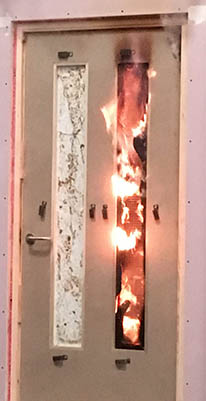Simon Beer, Managing Director of Calibso discusses the perils of not complying with the new Building Regulations for security in dwellings.
The introduction of a regulation is not new for the glazing industry. When a new requirement is introduced, some will comply fully immediately, some will partially comply and others will ignore it until they are forced to take notice. Approved Document Q (Security – Dwellings) came into effect on 1 October 2015 and like previous new Building Regulations, it is being phased in. Simon Beer, Managing Director of Calibso discusses the possible consequences of non-compliance for developers, manufacturers and installers if they either ignore the regulation, or inadvertently fail to comply. Simon believes there are 3 main scenarios associated with non-compliance, all of which could potentially cost huge sums of money and cause reputational damage.
Non-compliance scenarios
As enforcement officers get up to speed with the regulation, they are increasingly likely to request evidence of compliance for the windows and doors that are fitted to a dwelling. If non-compliant windows or doors have been fitted, the enforcement officer is unlikely to be willing to sign them off without proper evidence.
Scenario 1: – Retrospective test evidence achieved with a pass result: For most products, test evidence will be required to demonstrate compliance with ADQ, so the best case when requiring retrospective test evidence is a delay while the manufacturer proves that the product actually works. If all goes well, the manufacturer will book a test slot, test their product and achieve a pass result. However, even with a first time pass, you would expect lead times of up to 8 weeks to produce the test product (which need to be to the exact specification to that fitted), another 6 weeks for the test slot to be available, followed by a lead time for the report to be written (often at least another 6 weeks from the test date). The result of non-compliance in Scenario 1 is therefore the cost of the test, plus the impact of a 20 weeks’ (or more) delay on handover of the building.
Scenario 2: – Retrospective test evidence attempted with a fail result: Test laboratories would agree that windows and doors often don’t pass first time. If the product is retrospectively tested and doesn’t pass, you have to wait again for the lab to be free for a re-test. Several attempts may be required before a positive result has been achieved, and the enforcement body should then check that the tested specification is the same as that installed in the building. Because some redesign was required to pass the test, the specification will be different, so all of the installed windows and doors will need to be either re-worked or replaced. The result of non-compliance in Scenario 2 is therefore the cost of however many tests are required to achieve a pass, plus the impact of potentially several months’ delay on handover of the building, plus the cost of re-working or replacing all windows and doorsets in the building.
Scenario 3:– Non-compliance discovered after handover: It would be easy to think that once the building has been handed over that is the end of it. However, what would happen if the non-compliance with ADQ was uncovered by an opportunist burglar when they attempt to break in? If an insurance company finds themselves paying claims after a burglar discovers that they can enter the houses on a non-compliant estate, they could request proof of compliance for the windows or doors. Where the security performance has not been proven, there will have been a breach of the Building Regulations which could invalidate a claim. If there is suspicion over the evidence, it wouldn’t be difficult for the insurance company to remove a product from the site and test it, and they would then only need to work out who to go after to cover their losses.
ADQ explained on new site
Time will tell whether these scenarios prove to be realistic, however, it would be wise to avoid being the developer, manufacturer or installer that is involved in any test to see how this unfolds. Calibso believes that Approved Document Q has huge implications for the industry. The Approved Document is complicated and open to interpretation. It would be easy to think that you have complied when you haven’t which could prove very costly. Due to the number of requests for clarification received by Calibso, it has produced a website to give an impartial, easy-to-read interpretation of ADQ, to help developers, manufacturers, and installers to navigate their way through the regulation.
This article is also published in windows active.



